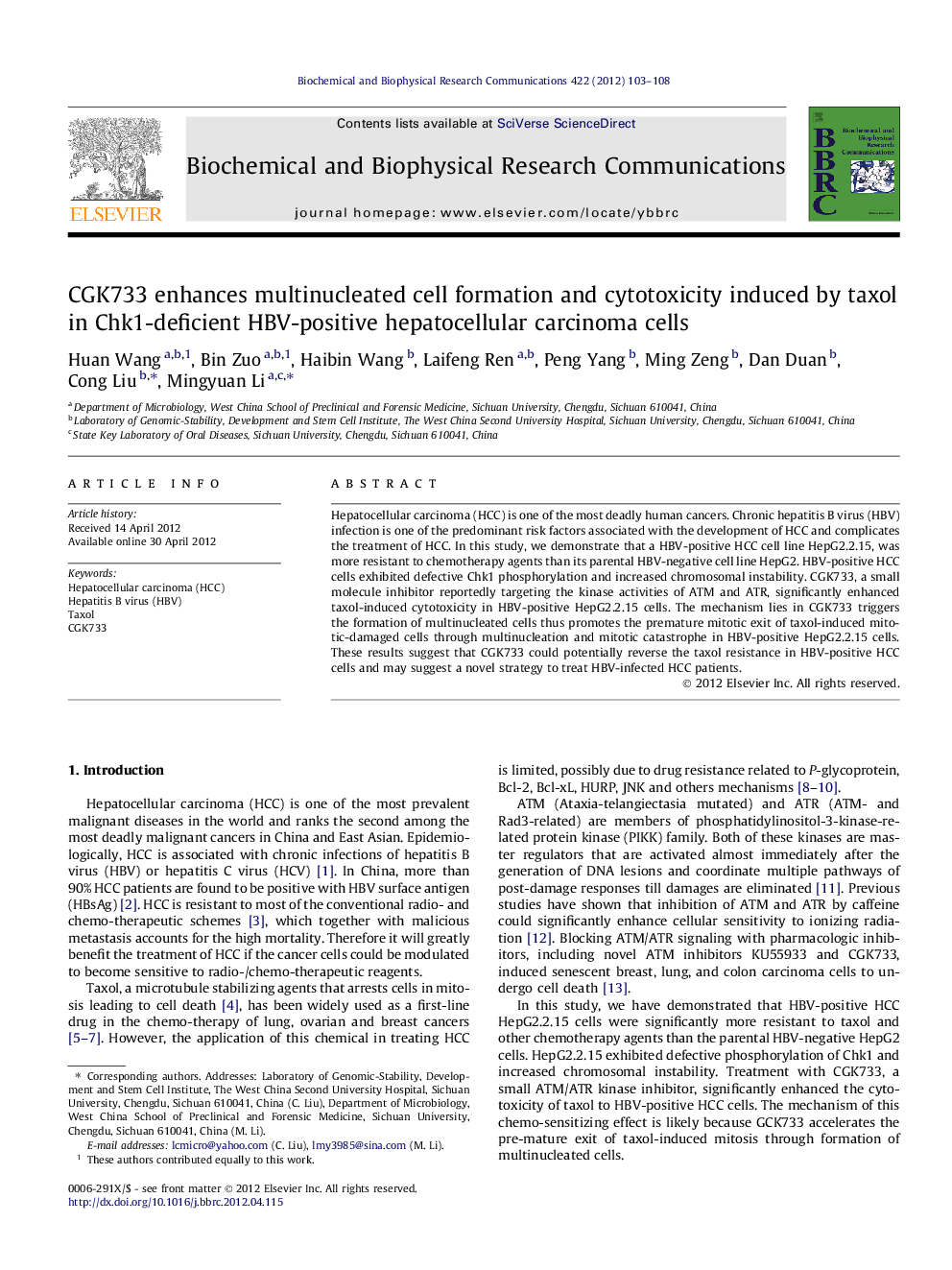| Article ID | Journal | Published Year | Pages | File Type |
|---|---|---|---|---|
| 1929727 | Biochemical and Biophysical Research Communications | 2012 | 6 Pages |
Hepatocellular carcinoma (HCC) is one of the most deadly human cancers. Chronic hepatitis B virus (HBV) infection is one of the predominant risk factors associated with the development of HCC and complicates the treatment of HCC. In this study, we demonstrate that a HBV-positive HCC cell line HepG2.2.15, was more resistant to chemotherapy agents than its parental HBV-negative cell line HepG2. HBV-positive HCC cells exhibited defective Chk1 phosphorylation and increased chromosomal instability. CGK733, a small molecule inhibitor reportedly targeting the kinase activities of ATM and ATR, significantly enhanced taxol-induced cytotoxicity in HBV-positive HepG2.2.15 cells. The mechanism lies in CGK733 triggers the formation of multinucleated cells thus promotes the premature mitotic exit of taxol-induced mitotic-damaged cells through multinucleation and mitotic catastrophe in HBV-positive HepG2.2.15 cells. These results suggest that CGK733 could potentially reverse the taxol resistance in HBV-positive HCC cells and may suggest a novel strategy to treat HBV-infected HCC patients.
► HepG2.2.15 cells were more resistant to chemo-therapeutic reagents than HepG2 cells. ► HepG2.2.15 cells exhibited deficient of Chk1 and chromosomal instability increasing. ► CGK733 enhanced taxol-induced cell death in HBV-positive HCC cells. ► CGK733 triggers the multinucleation of taxol-treated HepG2.2.15 cells. ► CGK733 promotes the premature mitotic exit of taxol-treated HepG2.2.15 cells.
